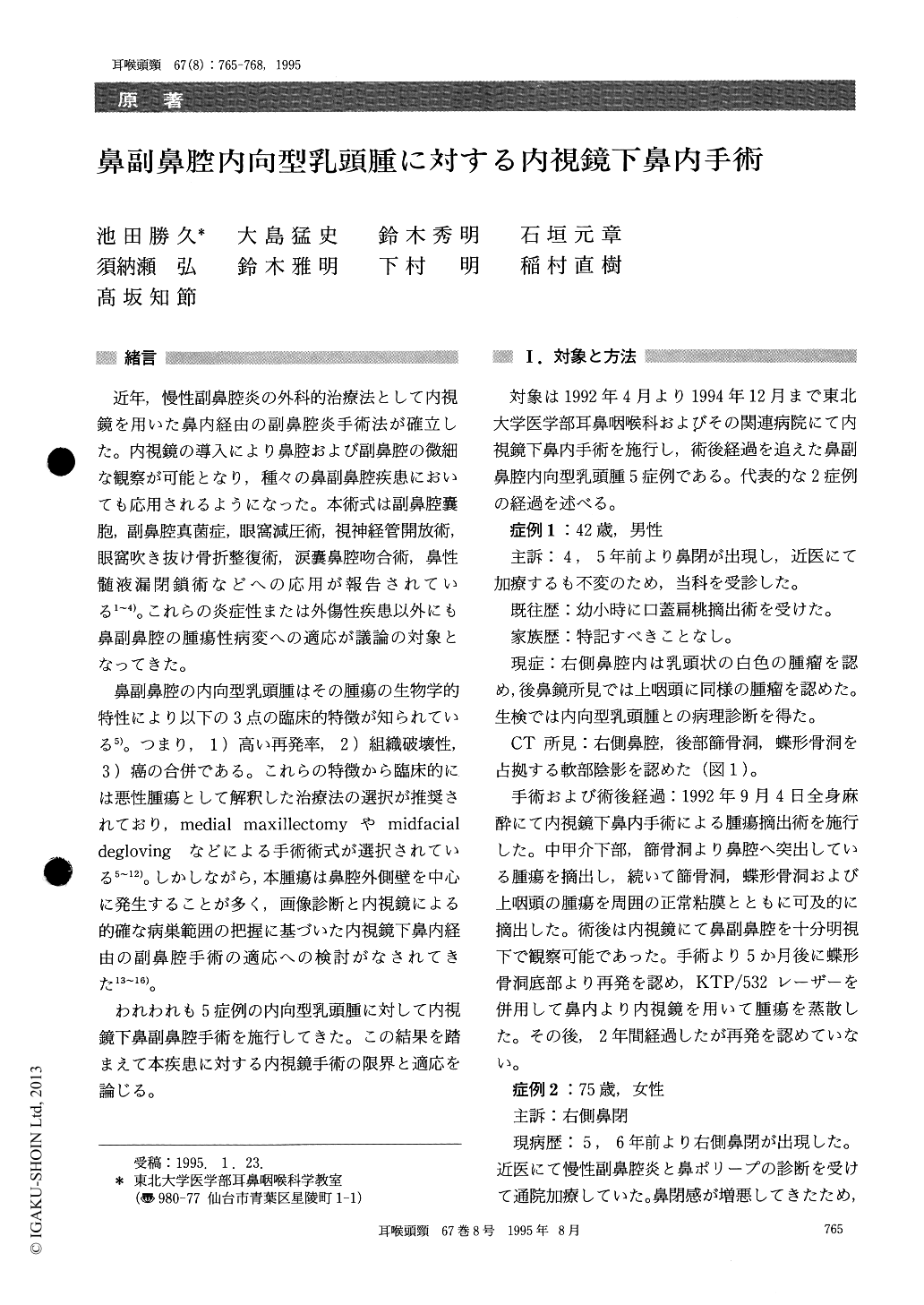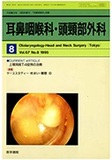Japanese
English
- 有料閲覧
- Abstract 文献概要
- 1ページ目 Look Inside
緒言
近年,慢性副鼻腔炎の外科的治療法として内視鏡を用いた鼻内経由の副鼻腔炎手術法が確立した。内視鏡の導入により鼻腔および副鼻腔の微細な観察が可能となり,種々の鼻副鼻腔疾患においても応用されるようになった。本術式は副鼻腔嚢胞,副鼻腔真菌症,眼窩減圧術,視神経管開放術,眼窩吹き抜け骨折整復術,涙嚢鼻腔吻合術,鼻性髄液漏閉鎖術などへの応用が報告されている1〜4)。これらの炎症性または外傷性疾患以外にも鼻副鼻腔の腫瘍性病変への適応が議論の対象となってきた。
鼻副鼻腔の内向型乳頭腫はその腫瘍の生物学的特性により以下の3点の臨床的特徴が知られている5)。つまり,1)高い再発率,2)組織破壊性,3)癌の合併である。これらの特徴から臨床的には悪性腫瘍として解釈した治療法の選択が推奨されており,medial maxillectomyやmidfacial degloving などによる手術術式が選択されている5〜12)。しかしながら,本腫瘍は鼻腔外側壁を中心に発生することが多く,画像診断と内視鏡による的確な病巣範囲の把握に基づいた内視鏡下鼻内経由の副鼻腔手術の適応への検討がなされてきた13〜16)。
In five cases inverted papilloma in the nasal and paranasal cavity was removed by endoscopic sinus surgery. All patients had the lesions in the nasal cavity, ethmoid, sphenoid or maxillary sinus with-out bony destruction. An associated malignancy was found in one patient who underwent medial maxil-lectomy. One patient with recurrent tumor in the sphenoid underwent vaporization by KTP/532 laser. One patient underwent an additional Denker rhinotomy bacause of residual disease in the maxil-lary sinus. Based on our experience, the limited lesions in the nasal cavity, the ethmoid and sphenoid sinus might have good indication for endoscopic sinus surgery.

Copyright © 1995, Igaku-Shoin Ltd. All rights reserved.


